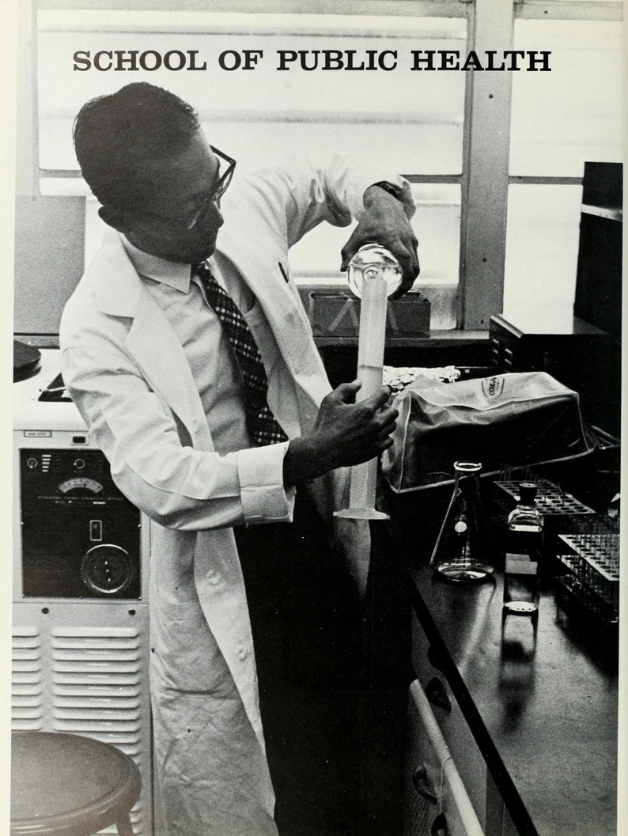A History of Impact: 1940s - 1960s
The UCLA Fielding School of Public Health has been working to build a healthier future for more than six decades. The examples that follow, interspersed throughout this section, are just a few of the many ways.
Public health education at UCLA predated the establishment of a school of public health by 15 years. In 1946, UCLA began offering undergraduate public health instruction as part of a University of California systemwide school. The UCLA Department of Public Health was housed in Building 3T, a wartime surplus barrack located at the site where Charles E. Young Research Library is today on the northern part of the campus (see zoomed-in section of map, below). The first four students received BS degrees in public health at UCLA in 1948.
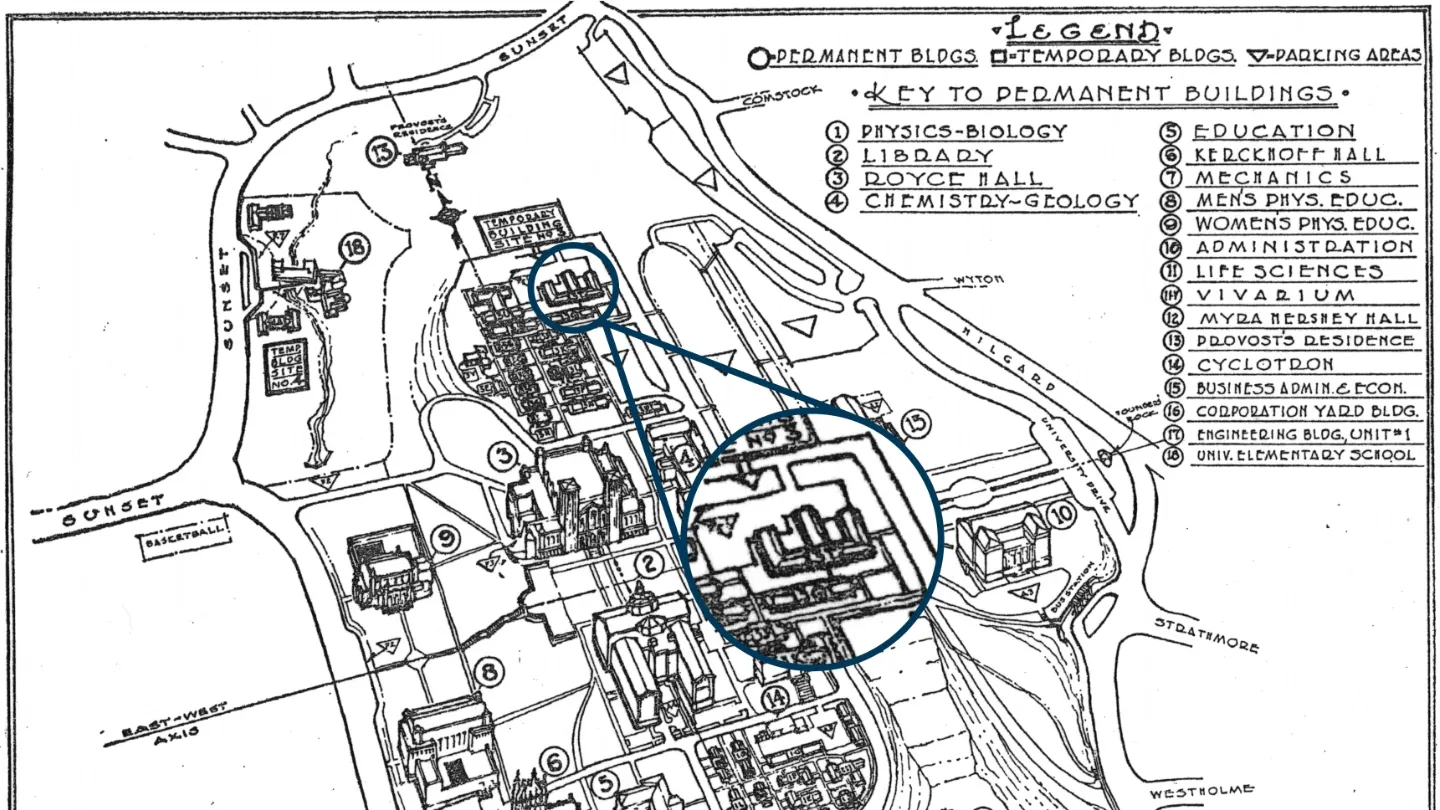
Dr. A. Harry Bliss, who had been a public health sanitary officer and medical inspector, was recruited to develop a curriculum and served as chair of UCLA’s public health department from 1947 to 1956. Bliss pushed for an independent public health school at UCLA, and brought in lecturers from the Los Angeles City Health Department to bolster the program. Some of the lecturers from the city’s health department would become the new school’s first faculty members.
In 1954, Dr. Wilton Halverson, a former director of public health for the state of California, was named associate dean of the University of California’s public health program at UCLA. Halverson appointed Drs. John Chapman, Wilfrid Dixon, and Lenor S. (Steve) Goerke to develop programs in epidemiology, biostatistics, and health administration, respectively. In 1957, UCLA began offering its first program leading to an advanced public health degree.
Dr. Gladys Emerson, who, with her husband, Oliver, was the first to isolate vitamin E in 1936, led the school’s nutrition division.
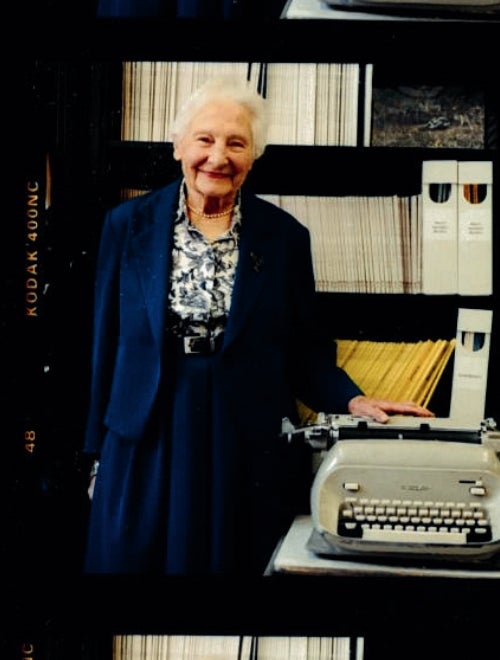 Dr. Ruth Roemer (pictured, right) was a labor lawyer in the 1940s and 1950s, but by the time she joined the FSPH faculty in 1962, she had begun putting her legal and advocacy skills toward advancing public health. She would make her mark in many realms: as an ardent campaigner for fluoridation of public water supplies; as a proponent of reproductive freedom; and as a leader in providing analyses and advocacy for tobacco control legislation around the world. An annual session of the Paul Torrens Health Forum at UCLA FSPH is held in Roemer’s honor.
Dr. Ruth Roemer (pictured, right) was a labor lawyer in the 1940s and 1950s, but by the time she joined the FSPH faculty in 1962, she had begun putting her legal and advocacy skills toward advancing public health. She would make her mark in many realms: as an ardent campaigner for fluoridation of public water supplies; as a proponent of reproductive freedom; and as a leader in providing analyses and advocacy for tobacco control legislation around the world. An annual session of the Paul Torrens Health Forum at UCLA FSPH is held in Roemer’s honor.
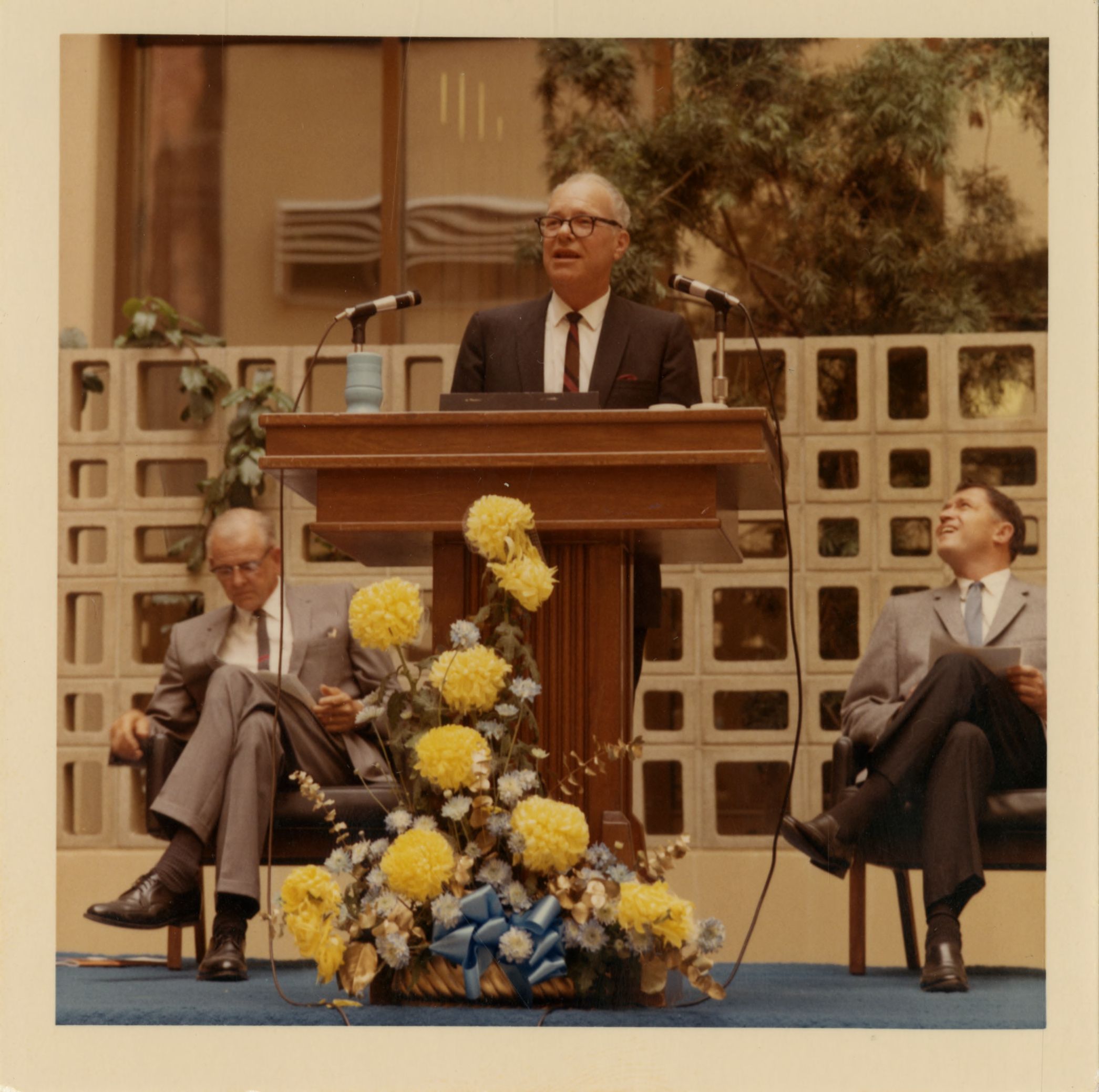 The UCLA School of Public Health was established as an independent school by the University of California Regents on March 17, 1961, with headquarters in the Home Economics Building (now Campbell Hall). Dr. Lenor S. (Steve) Goerke (speaking), who had a long career as a local health officer and had served as medical director of the L.A. City Health Department prior to joining the UCLA faculty, was named the school’s first dean. The new school started with 57 faculty members in seven divisions: Biostatistics, Epidemiology, Health Administration, Occupational Health, Health Education, Environmental Health, and Public Health Nutrition. Graduate programs leading to MS, MPH, PhD, and DrPH degrees were offered, along with an undergraduate BS degree.
The UCLA School of Public Health was established as an independent school by the University of California Regents on March 17, 1961, with headquarters in the Home Economics Building (now Campbell Hall). Dr. Lenor S. (Steve) Goerke (speaking), who had a long career as a local health officer and had served as medical director of the L.A. City Health Department prior to joining the UCLA faculty, was named the school’s first dean. The new school started with 57 faculty members in seven divisions: Biostatistics, Epidemiology, Health Administration, Occupational Health, Health Education, Environmental Health, and Public Health Nutrition. Graduate programs leading to MS, MPH, PhD, and DrPH degrees were offered, along with an undergraduate BS degree.
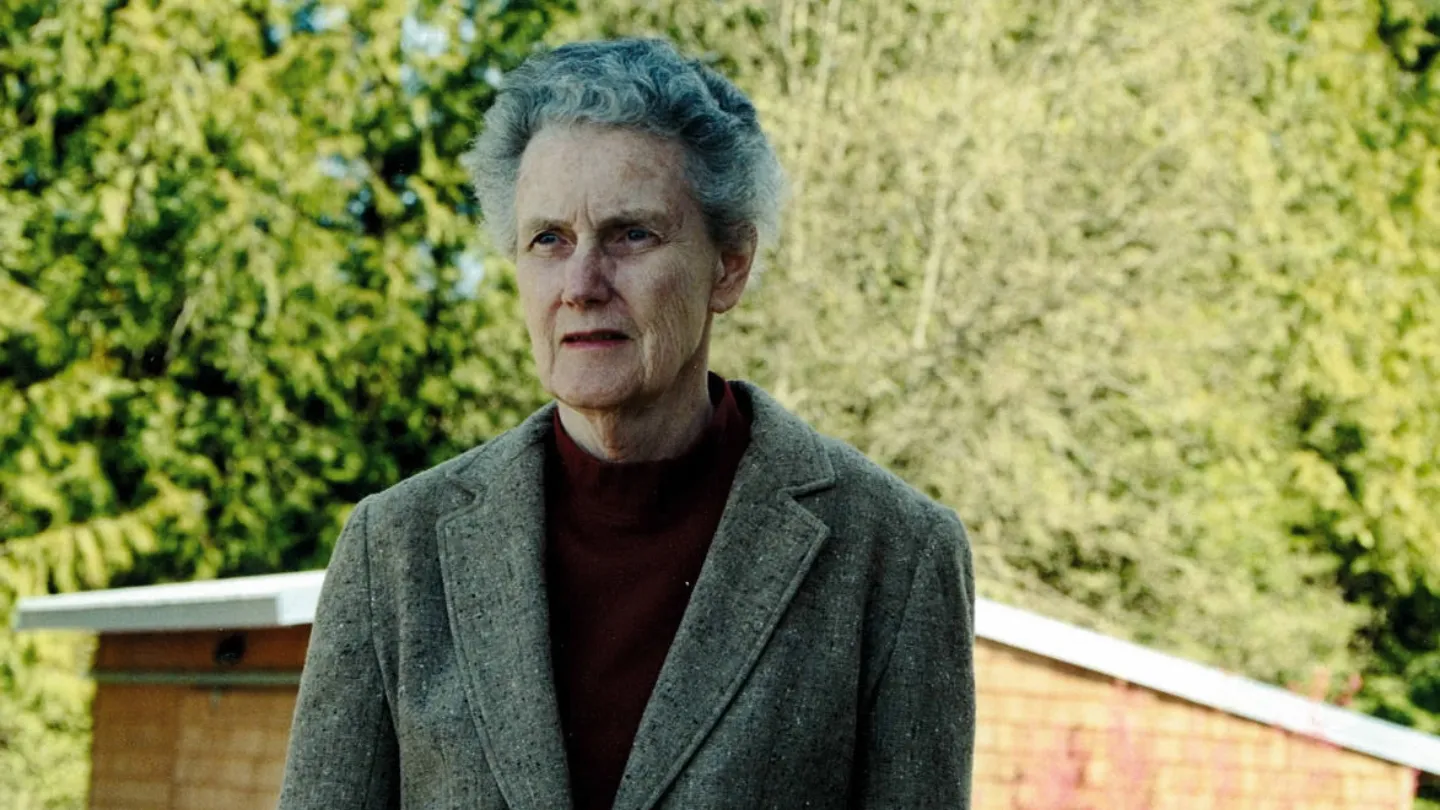
The school’s first doctoral graduate was Dr. Virginia A. Clark, who earned a PhD in Biostatistics in 1963. Clark went on to author several textbooks on statistics and served as a faculty member at the school until her retirement.
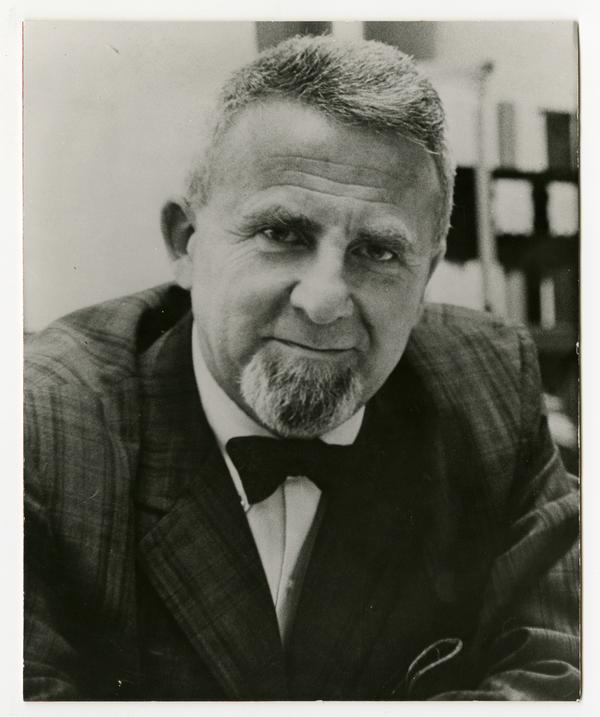 After President Lyndon Johnson’s historic signing of Medicare into law in 1965, the school was designated as a Center for Training for the Medicare Program for the Southwest States, with Dr. Milton Roemer (pictured, right), a professor of health services, as director. Roemer, a champion of universal health insurance who worked in 71 countries and wrote the two-volume tome “National Health Systems of the World,” was also known for “Roemer’s Law” — the concept, based on a series of studies he led, that physicians tend to fill the number of hospital beds available to them.
After President Lyndon Johnson’s historic signing of Medicare into law in 1965, the school was designated as a Center for Training for the Medicare Program for the Southwest States, with Dr. Milton Roemer (pictured, right), a professor of health services, as director. Roemer, a champion of universal health insurance who worked in 71 countries and wrote the two-volume tome “National Health Systems of the World,” was also known for “Roemer’s Law” — the concept, based on a series of studies he led, that physicians tend to fill the number of hospital beds available to them.
In 1968, the school moved into the UCLA Center for Health Sciences building that it continues to call home. The building was the site of the university’s hospital, UCLA Medical Center, until Ronald Reagan UCLA Medical Center opened across the street in 2008.
